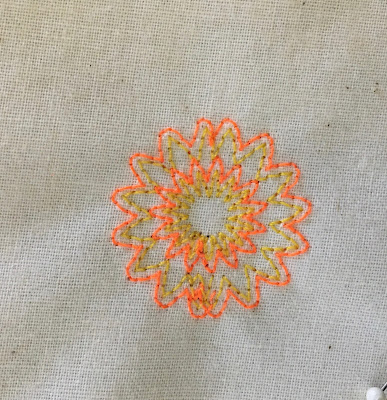Here is a fairly obscure vintage Singer product that might not rock your sewing world, but is kind of interesting.
First, let it be said that I don't really make bound buttonholes. I did it on one dress (with a limp rayon challis that easily frayed) and decided I didn't care if I ever did it again. But as with almost any vintage Singer doo-dad, I'm willing to try it just for the novelty factor.
This kit consists mainly of three things to "help" you make a bound buttonhole - any of which you could do just as well without:
1.
Pattern templates that you actually pin to the fabric and sew over to get your buttonhole exactly right. You could draw or download your own, of course.
2.
Step-by-step instructions. You can find those anywhere
3.
A flat metal tool that you use to press the folds that make the buttonhole opening. You could press without it, this just makes it sharper.
Since this was an unused vintage item, I made copies of the pattern templates so I won't have to destroy the originals.
They come in sizes from 3/4" to 1-1/2". I chose the 1-1/4" for my test sample
1. Mark your fabric in order to line up the pattern
2. Baste the pattern to the wrong side of your facing for the buttonhole, then cut it out
3. Pin the facing piece on the right side of your fabric over the lines you've drawn
4. Sew with a very short stitch along the parallel stitching lines.
And remove the paper pattern
5. Now you get to use the little tool to iron the folds
6. You slash down the middle of the facing piece (but not through the main fabric, yet.)
7. Then you turn it around and slash the main fabric down the middle and angled up to the end of the stitching lines, like this (I drew in the lines for illustration)
8. And turn the facing in through the front of the buttonhole to the back side
9. Now the trickiest part is to stitch down the little triangles that were created when you cut it open. With the work right side up, fold back the fabric along the side of the facing, and that little triangle should "pop" up. If not, coax it out and make sure you are catching it in the seam. Sew as close as possible to this edge.
Do this on both sides and your back will look like this:
10. On the front you can top stitch along that same line of stitching to reinforce it.
So there you go, in TEN "Easy Steps", you have a single bound buttonhole. Now repeat for 6-8 times or however many of those are on your garment, and have fun with that!

























































